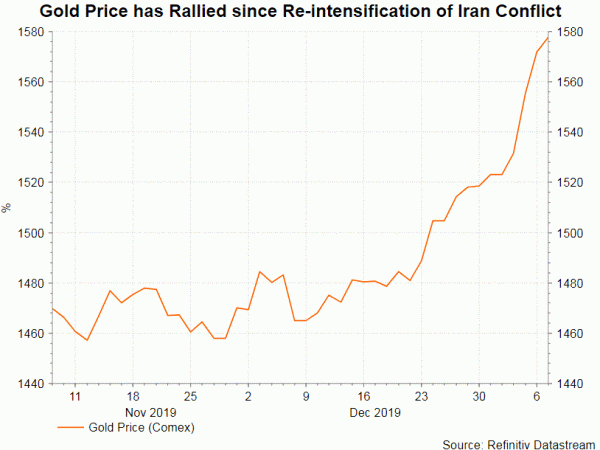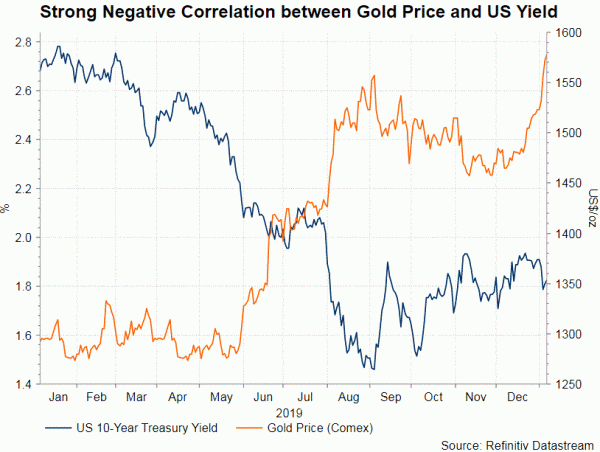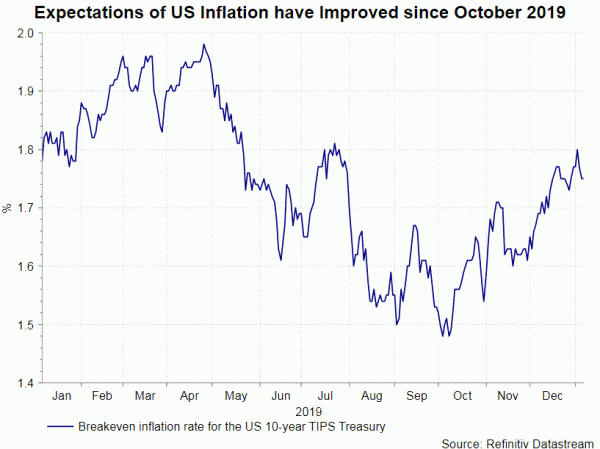Geopolitical tensions in Iran continue to evolve. The latest development is that Iran has launched over a dozen missiles at Iraqi bases hosting US and coalition troops. The Islamic Revolutionary Guard Corps (IRGC) announced in a statement that the attack was done “in the name of martyr General Qassem Suleimani”. The move evidences that Iran is keen on retaliation and the conflict will carry on for some time. Crude oil price initially rallied but then reversed. The front-month WTI crude oil contract spiked to 65.65, a level not seen since April 2019, before retreating to 63.2. The corresponding Brent crude contract soared to as high as US$71.75/bbl after the news. The price is currently at around US$69/bbl.
Wars and conflicts usually raise demand for gold as a safe haven. The front-month Comex contract rallied to 1604.2, highest since 2013, earlier today. There is potential for the yellow metal to strengthen further if the tensions escalate. Besides risk aversion, gold price is also lifted by decline in US Treasury yields, USD weakness, and rising inflation expectations.
Both gold and US Treasury are the world’s most secure assets. The opportunity cost of own gold is bond yield. As such, lower yield is the driving force of gold price. Over the past year, the correlation coefficient between gold price and 10-year US Treasury yield is -0.94, suggesting very strong negative correlation. As we mentioned in the report, titled “US Dollar May Lose Appeal this Year if Market Sentiment Improves and US Growth Slows”, we mentioned that yield differentials between USD and other currencies has narrowed. Meanwhile, the market expects that there will be at least one more rate cut this year. This could lead to further decrease in US yield, a positive factor for gold.
Meanwhile, there is also negative correlation between gold price and US dollar. The greenback might become less appealing this year amidst diminishing growth advantage and narrowing yield differential over other currencies. This could also send gold higher.
Although US GDP growth is forecast to ease, inflation expectations have climbed higher. The breakeven inflation rate for the US 10-year TIPS Treasury has improved to 1.8% last week, up from the recent low of 1.48% in early October.
Although concerns over global slowdown might have eased, renewed tensions in Iran have raised demand for gold as safe haven. Together with declining US yields, USD weakness and improving inflation expectations, there is potential for gold to strengthen.
















